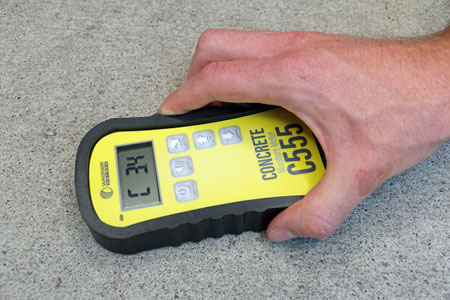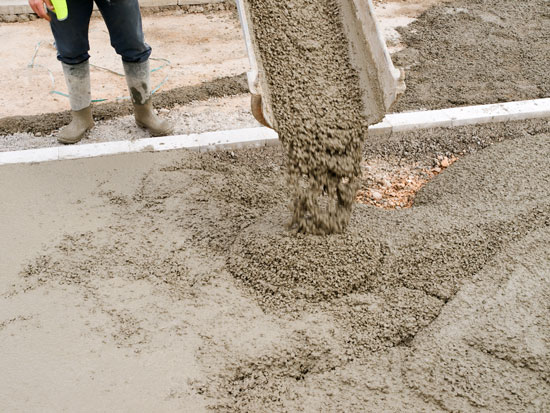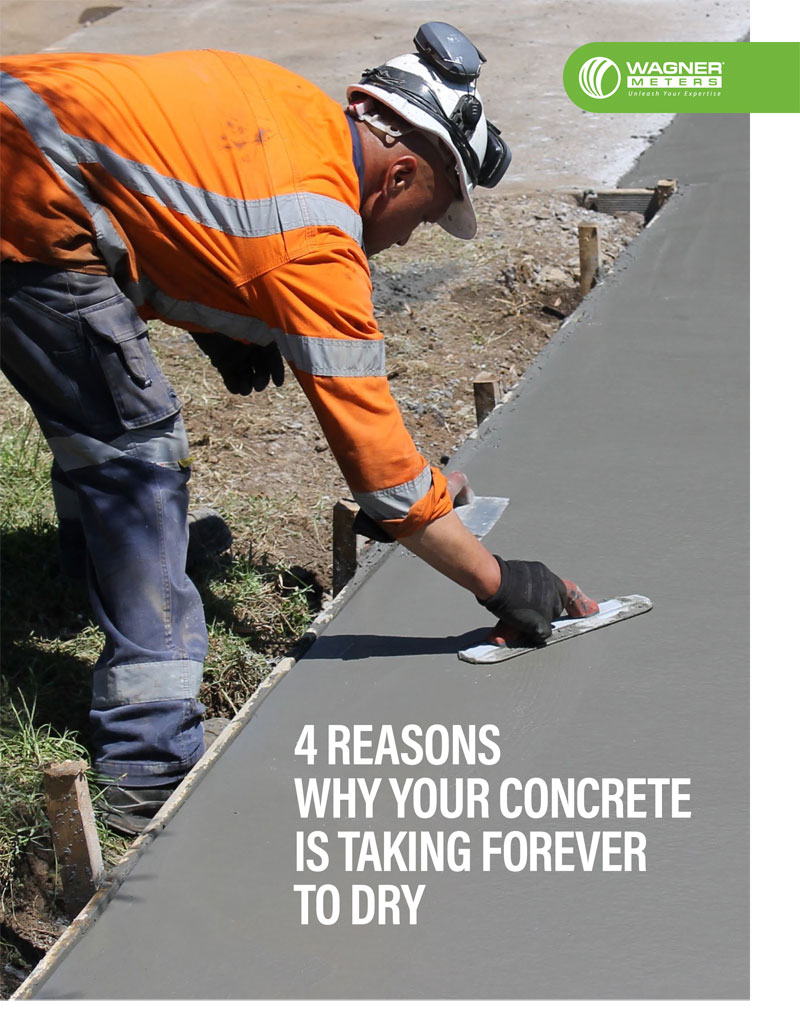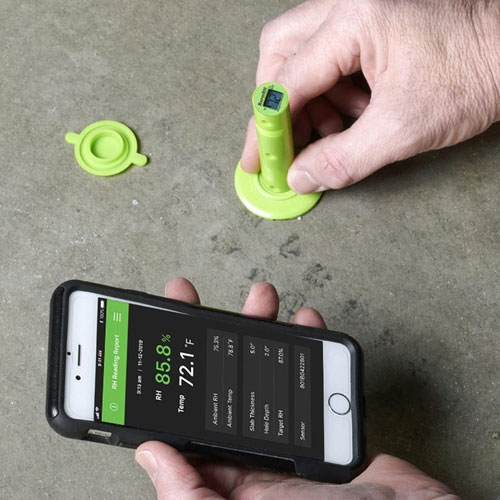Why a Concrete Moisture Meter isn’t the Final Decision
A concrete surface moisture meter is a useful tool when used correctly. The aim of this article is to separate fact from fiction when it comes to using concrete surface moisture meters to test concrete moisture levels. We’re going to talk about how concrete dries, what concrete surface moisture meters are capable of doing, and what they’re not capable of doing. We’re going to finish by discussing when and how to properly use a concrete surface moisture meter.

If used correctly, a concrete moisture meter is a helpful tool, but never use it to make flooring installation decisions.
The Truth About Concrete Moisture Testing
The two most commonly used QUANTITATIVE methods of measuring moisture in concrete are relative humidity testing and the calcium chloride (CaCl) test. However, the CaCl test produces less useful, more variable readings because it only measures moisture on the surface of the slab.
The CaCl test involves placing a small dish of calcium chloride on the concrete and then sealing it under a plastic dome. It’s left there for three days, and then the resulting change in weight is used to calculate the MVER (moisture vapor emission rate).
Concrete surface moisture meters work by sending an electromagnetic signal into the concrete and measuring the capacitance of the field. However, they only work down to ¾-inch depth, and the reading can be affected by various things in the concrete mix such as the type of aggregate, the amount of water in the aggregate mix, the porosity of the concrete, the surface profile of the concrete, and any admixtures. Rebar can affect the reading as well. Also, the ASTM F2659 standard states that concrete moisture meters are for comparative measurement only. They are not intended for making final flooring installation decisions.
Concrete Dries From The Top Down

A freshly poured concrete slab will dry from the top down, which is why concrete surface moisture meters and other surface tests may give inaccurate results.
Uncovered concrete dries from the top down. In other words, just because the surface of the slab is dry doesn’t mean the entire slab is dry. This is why both concrete surface moisture meters and the CaCl test can produce inaccurate results. They tell you nothing about moisture deep in a slab.
This is a problem because if you cover and seal a concrete slab that isn’t fully dry, the moisture will start to disperse evenly throughout the slab. You thought the slab was dry because the surface was dry. However, when you place a covering on it, excess moisture deep within the slab starts rising to the surface. This is how flooring failures often happen.
What Concrete Moisture Meters Can And Cannot Do
What concrete moisture meters can do
Concrete surface moisture meters can tell you—qualitatively—whether a concrete floor slab is wet or dry. The ASTM F2659 says a concrete moisture meter is for the “preliminary evaluation of the comparative moisture condition of concrete, gypsum cement, and other floor slabs and screeds.”
What concrete moisture meters can’t do
Concrete surface moisture meters can’t give you quantitative data about moisture content in a concrete slab. This isn’t what they’re designed to do. In fact, they can’t do this because no two batches of concrete are the same.
Because concrete surface moisture meters can only give a surface-based reading, they can’t give you quantitative data about moisture throughout the slab. In other words, they can’t tell you if a slab is dry enough for a flooring installation, even if we’d all like them to be able to.
So does that mean a concrete pinless moisture meter is useless? Definitely not, as you shall see.

Free Download – 4 Reasons Why Your Concrete Is Taking Forever to Dry
Using A Concrete Moisture Meter With In Situ RH Testing
Today, the most reliable method for moisture measurement in concrete floor slabs is the in situ relative humidity (RH) test (ASTM F2170). Unlike other concrete moisture testing methods, the in situ RH test is supported by scientific research, and can tell you if there’s moisture deep within the slab.
The in situ RH test is both easy to perform and highly accurate. You simply drill a hole to the required depth, insert an RH probe (also called an “RH sensor”), and then come back 24 hours later to take an RH reading. You can use a concrete moisture meter to determine where to place the in situ probes. In other words, you can use it to find areas of the slab where you suspect the RH level within the slab is higher.
Unfortunately, some people avoid using the in situ RH test because they think it’s too difficult or they’re worried they won’t perform the test properly. This concern is unwarranted. The RH test is easy. All you need to do is properly perform it by following the ASTM F2170 standard. Just download this checklist and make sure you go through all the steps.
Concrete Moisture Testing Made Easy Using Wagner Meters’ Rapid RH® L6

Using the Rapid RH L6 system makes testing concrete moisture extremely easy, accurate, and reliable.
Our Rapid RH® L6 system makes in situ RH testing easier than ever before, and it fully complies with ASTM F2170. You can send the results of your readings (including the RH and ambient temperature) to the accompanying DataMaster™ app, installed on your smartphone or tablet for easy reporting.
For more information about concrete moisture meters and testing, check out the American Concrete Institute, and RapidRH.com where you’ll find a large collection of articles, videos, and other educational content about concrete moisture testing. If you want to go from zero to hero in about an hour, be sure to check out these free webinars about moisture testing.
To learn more about the Rapid RH L6 system, C555 Concrete Moisture Meter, or the DataMaster app, call the Rapid RH team at 800-933-3506.
Jason has 20+ years’ experience in sales and sales management in a spectrum of industries and has successfully launched a variety of products to the market, including the original Rapid RH® concrete moisture tests. He currently works with Wagner Meters as our Rapid RH® product sales manager.
Related Posts via Taxonomies
Last updated on June 8th, 2021



